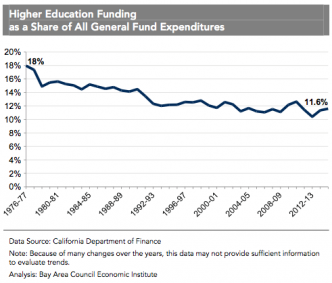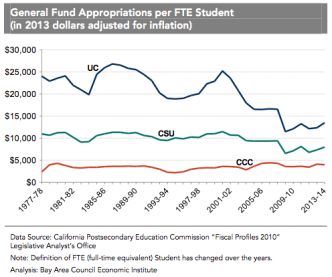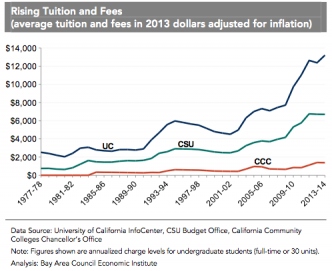Authors
Sean Randolph, President & CEO, Bay Area Council Economic Institute
Hans Johnson, Bren Fellow, Public Policy Institute of California
Credits
Higher Education photo courtesy of the University of California: Students in Lecture Hall created by Erik Jepsen, UC San Diego Publications


